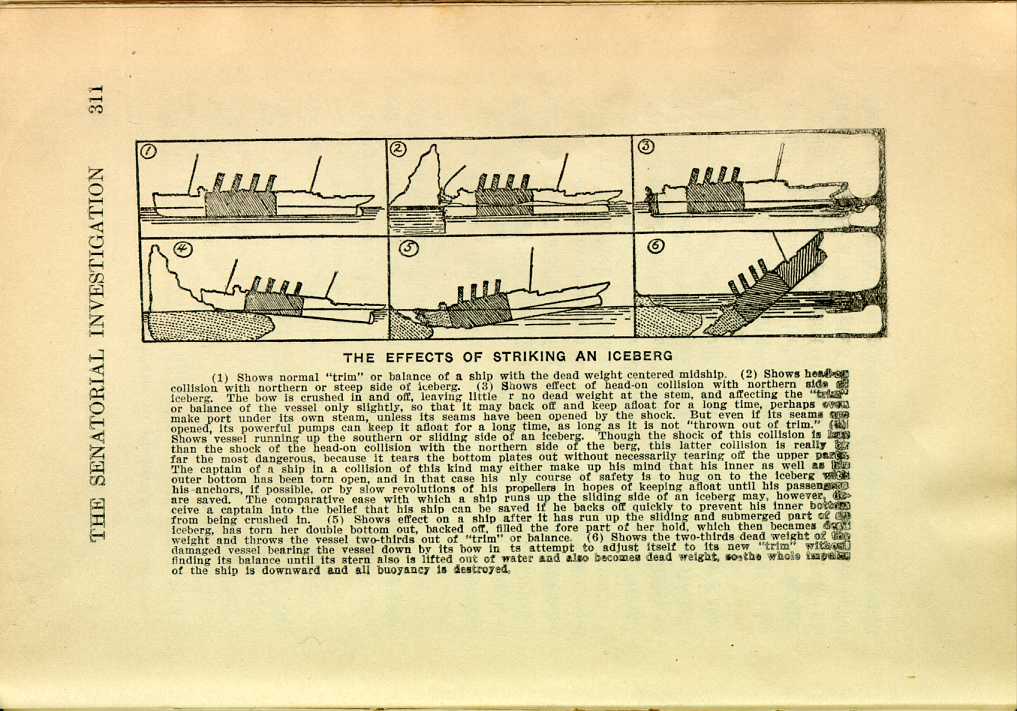CARPENTER FOUND LEAKS
"The captain ordered me to send a carpenter to sound the ship, but I found a carpenter coming up with the announcement that the ship was taking water. In the mail room I found mail sacks floating about while the clerks were at work. I went to the bridge and reported, and the captain ordered the life-boats to be made ready."
Boxhall testified that at Captain Smith's orders he took word of the ship's position to the wireless operators.
"What position was that?"
"Forty-one forty-six north, fifty fourteen west."
"Was that the last position taken?"
"Yes, the Titanic stood not far from there when she sank."
After that Boxhall went back to the life-boats, where there were many men and women. He said they had been provided with life-belts.
311
312
